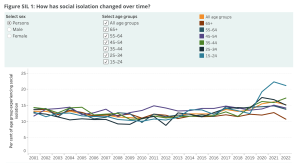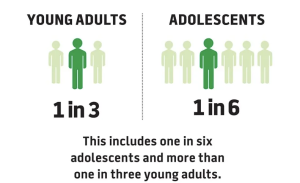(Feature Story)

Margaret, 45, lives alone in suburban Sydney. With no family visits, no daily conversations, and no social interactions, some days pass without his saying a single word. He is far from alone in feeling this way.
Story topic and angle
Loneliness is one of Australia’s most overlooked yet serious public health issues. From international students to older adults, many are struggling in a fast but emotionally distant society. Linked to mental illness, heart disease, and early death, loneliness affects millions with little media or policy attention.The angle of the essay portrayal could be to shed light on the neglected loneliness epidemic in Australia, exploring the invisible toll this public health crisis is taking on a diverse group of people and its direct link to physical and mental health issues.
Introduction
Loneliness has emerged as a critical public health issue in contemporary Australia, with far-reaching consequences for individuals and society. Recent research paints a concerning picture: according to the Australian Institute of Health and Welfare (AIHW, 2023), social isolation and loneliness now affect millions nationwide, cutting across age, gender, and socioeconomic lines. The health impacts are particularly alarming – a groundbreaking 2025 University of Sydney study revealed that prolonged loneliness triples early mortality risk among women, underscoring the urgent need for intervention.

The crisis manifests differently across demographic groups. While VicHealth’s 2023 Young Australian Loneliness Survey highlighted acute loneliness among youth, AIHW’s 2024 data insights confirm it remains pervasive among older adults and marginalised communities. Australia’s Health 2024 report further identifies loneliness as a key determinant of worsening mental and physical health outcomes nationwide.

This growing social issue stems from factors like fewer community spaces, digital replacing face-to-face interaction, and post-pandemic social disconnection. As Australia faces this silent crisis, understanding its scale through data and finding effective solutions is crucial. This article blends recent research with personal stories to highlight its impact on society and well-being.
Target Publication
This article is intended for publication on The Conversation, a platform known for in-depth, evidence-based journalism. The target audience includes university students, educators, researchers, policymakers, and socially conscious readers. They are the kind of audience that values data-rich storytelling, social analysis, and are in positions to influence policy and public thinking.
Interview
I’ll be interviewing people around me and the general public, as well as experts for more authority. These include:
- A psychology expert from the University of Sydney who can explain how long-term loneliness affects mental and physical health, especially in young people and students
- A local community volunteer who works with people facing social isolation
- A young adult or older person who can share their personal experience with loneliness
Conclusion
Loneliness isn’t a personal failure — it reflects a society that’s lost connection. This story aims to inform and urge readers to see loneliness as a public issue needing real action. Like smoking or obesity, should we treat it as a public health crisis requiring funding, education, and reform? Now is the time for Australia to start that conversation.




I really like this topic — it’s fresh and meaningful. The storytelling feels warm and authentic, and the research strongly supports the point. However, the perspective could be sharper — is the goal to emphasize the health hazards of loneliness, focus on policy appeals, or both? Right now, it’s a little unclear. Additionally, adding visual elements such as a timeline or a loneliness map could create a clearer picture for readers. Some interactive features, like a quick quiz or a “What do you think?” section, could also enhance reader engagement.
Overall, this is a very interesting topic. I think it would be even better if more interactivity could be added!